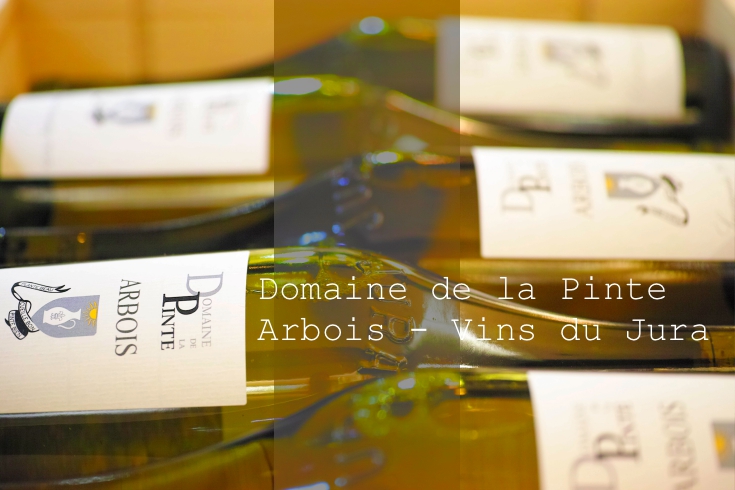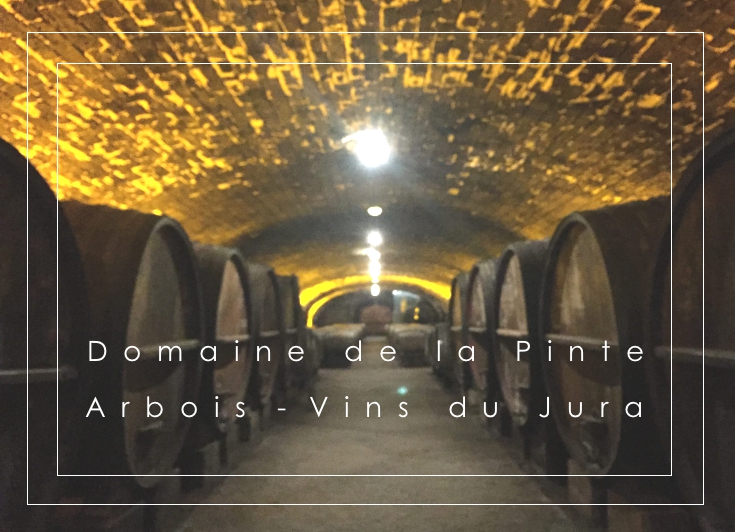
[Local Grapes from Biodynamic vineyards]
Jura is one of the hot spot of Natural wine movement. Domaine de la Pinte, historical winery in Arbois had started conversion of the vineyards to organic farming in teh early stage, and all the 34ha vineyards have been managed by biodynamie since 2009. Today Domaine de la Pinte is producing soulful wines from local grape varietals such as Poulsard, Savagnin, and Trousseau. The wine presents beautiful transparency, purity with great natural concentration, and softness that is attributed to Biodynamie.
The essential of wine-making of Domaine de la Pinte is a "time". They are willing to spend many years to produce a bottle of wine. Vin Jaune aged in the barrel for 6 years and 3 months(and further maturation in the bottle), moreover they spend 3 - 5 years for standard cuvée of Savagnin Ouillé. As a result of long time patience, Domaine de la Pinte could produce the special and characteristic wines with high quality.
|
|

[Jura Wine]
Jura wine, is French wine produced in the Jura département. Located between Burgundy and Switzerland, this cool climate wine region produces wines with some similarity to Burgundy and Swiss wine. Jura wines are distinctive and unusual wines, the most famous being vin jaune, which is made by a similar process to Sherry, developing under a flor-like strain of yeast. This is made from the local Savagnin grape variety. Other grape varieties include Poulsard, Trousseau, and Chardonnay. Other wine styles found in Jura includes a vin de paille made from Chardonnay, Poulsard and Savagnin, a sparkling Crémant du Jura made from slightly unripe Chardonnay grapes, and a vin de liqueur known as Macvin du Jura made by adding marc to halt fermentation.
[What is Vin Jaune?]
Vin jaune (French for "yellow wine") is a special and characteristic type of white wine made in the Jura region in eastern France. It is similar to dry fino Sherry and gets its character from being matured in a barrel under a film of yeast, known as the voile, on the wine's surface. Vin jaune shares many similarities with Sherry, including some aromas, but unlike Sherry, it is not a fortified wine. The wine is made from the Savagnin grape.
Vin jaune is made from late harvest Savagnin grapes, a white variety in the Traminer family which is less aromatic than the better-known Gewürztraminer. The grapes are usually harvested in late October when the sugars have developed enough to have a potential alcohol level of 13–15% for the finished wine. The grapes are fermented slowly and then kept in small old oak casks that hold 228 liters (60 gallons). The casks are not topped up, as they are with most wines, so an air gap appears above the wine due to evaporation. A film of yeast grows over the wine, protecting it partially (but not totally) from oxidation. In Jura, this film is called the voile (veil), but it is similar to the more familiar "flor" in Sherry production. The voile yeast has many similar properties to "flor" but thrives better in a lower alcohol environment and develops less heavily and thickly than "flor" does.
The voile typically takes two to three years to develop fully. During this time the wine is exposed to slight levels of oxidation that provoke chemical changes that produce ethanal (as well as ethanol, standard alcohol) and the aroma compound of sotolon. These compounds contribute to the unique flavors and aromas associated with vin jaune. Winemakers must carefully observe the wine throughout the aging process as there is a risk of it developing the wine fault of volatile acidity.
The wine acquires its characteristic yellow color and nutty flavors as it ages for the requisite time of six years and three months, the time that must elapse between harvest and bottling, although at certain points during this time the wine is not necessarily in the cask. After the allotted time, only about 62% of the original wine remains. The vin jaune is then bottled in special squat bottles that hold 62 cl (21 ounces), called clavelins. Historically the bottle size alludes to the amount of wine left over after six years of aging and evaporation.
[How to serve Vin Jaune]
Vin jaune is often served at cellar temperature 13–15 °C (55–60 °F) and the wine is sometimes decanted, exposing it to more oxygen prior to serving in order to stimulate the wine's unique aromas. The wine can be paired with savory food dishes with local Jura cuisine often including chicken recipes where the wine is cooked with the chicken itself and as a sauce component. Another common pairing is the local Comté cheese that is produced in the Franche-Comté region.
[Shanghai Crab and Vin Jaune]
"Shanghai Crab with Vin Jaune" is a wine culture which was created by Hong Kong gourmets and wine connoisseurs. One of the standard way of food matching is combination of wine and food from same region. But seems Jura and Yangcheng Lake have no relationship geographically and culturally. We don't know who connected this Jura wine and Shanghai Crab, but this idea is brilliant. It is a symbolic mixture of food & wine culture of Hong Kong.
[History : Domaine de la Pinte]
Although LA PINTE vineyards were planted in the 19th century before phylloxera struck, as elsewhere in France, phylloxera devastated the vineyards at La Pinte and the owners of the time did not replant the vines, despite of the potential of the terroir. It was not until in the early 50’s when, Roger MARTIN, both winelover and geologist, decided to replant in Arbois.
He chose LA PINTE and together with Marcel Poux, a winemaker, negociant, and also the Mayor of Arbois at the time, they planted 20 hectares of which more than a half were Savagnin. Marcel POUX left the partnership soon after they started and the MARTIN family took over his share in the venture. The LA PINTE adventure had begun. They built the cellars with basket handle arches, and they are said to be the last franc-comtois construction to be built in the old way.The stones are jurassien chalk which come from the Montesserain quarry. Once everything was ready they welcomed one of the finest harvests of the century: 1959. It boded well for the future. (by Renaissance des Appellations)
|
|
|